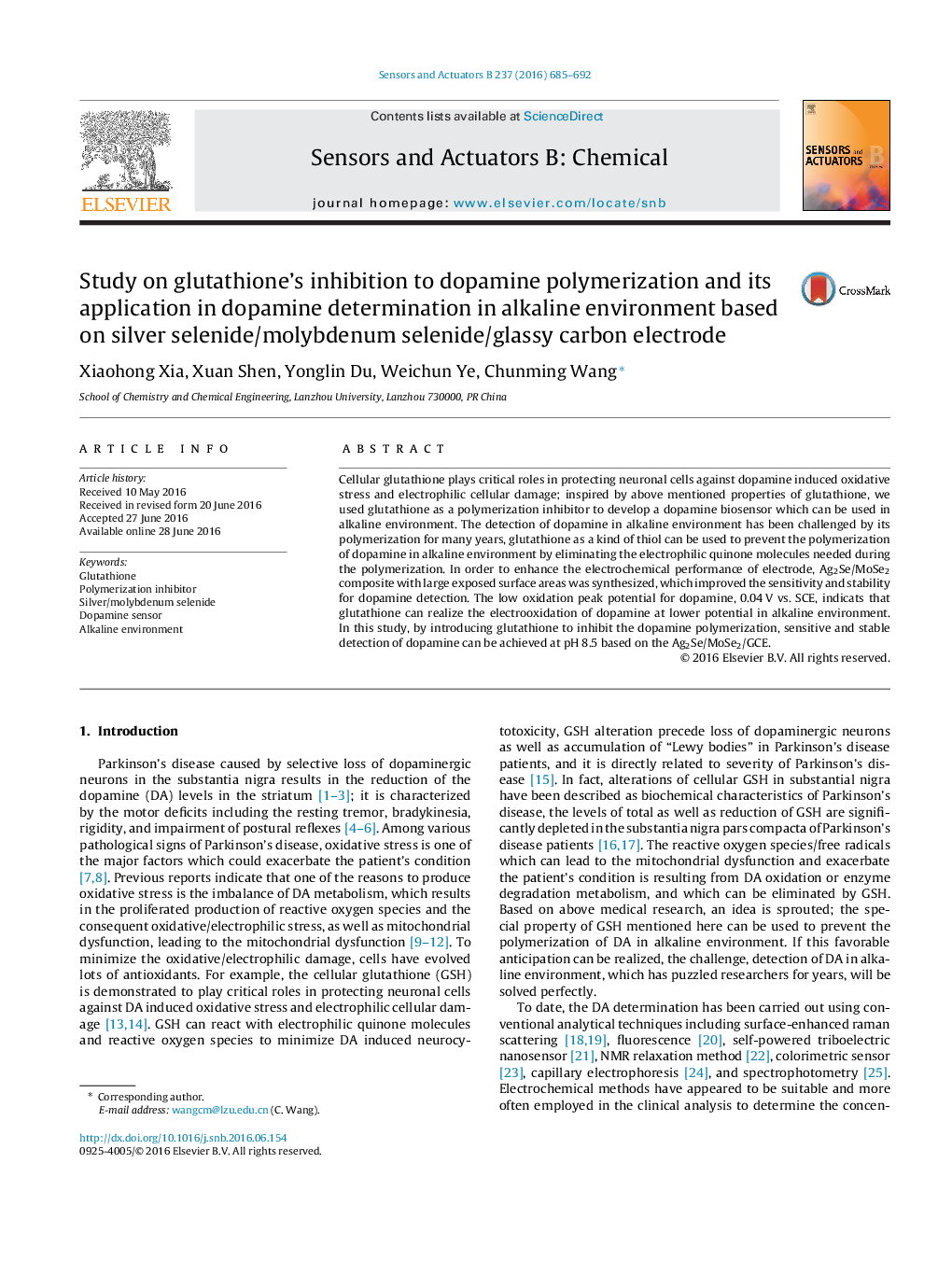| Article ID | Journal | Published Year | Pages | File Type |
|---|---|---|---|---|
| 742303 | Sensors and Actuators B: Chemical | 2016 | 8 Pages |
•Cysteinyl residue of glutathione is the action target for dopamine quinone.•Glutathione inhibited dopamine polymerization in alkaline environment successfully.•This inhibition realized the oxidation of dopamine with lower energy consumption.•Based on glutathione, dopamine determination in alkaline environment was realized.•This biosensor displays high sensitivity and stablility for dopamine determination.
Cellular glutathione plays critical roles in protecting neuronal cells against dopamine induced oxidative stress and electrophilic cellular damage; inspired by above mentioned properties of glutathione, we used glutathione as a polymerization inhibitor to develop a dopamine biosensor which can be used in alkaline environment. The detection of dopamine in alkaline environment has been challenged by its polymerization for many years, glutathione as a kind of thiol can be used to prevent the polymerization of dopamine in alkaline environment by eliminating the electrophilic quinone molecules needed during the polymerization. In order to enhance the electrochemical performance of electrode, Ag2Se/MoSe2 composite with large exposed surface areas was synthesized, which improved the sensitivity and stability for dopamine detection. The low oxidation peak potential for dopamine, 0.04 V vs. SCE, indicats that glutathione can realize the electrooxidation of dopamine at lower potential in alkaline environment. In this study, by introducing glutathione to inhibit the dopamine polymerization, sensitive and stable detection of dopamine can be achieved at pH 8.5 based on the Ag2Se/MoSe2/GCE.
